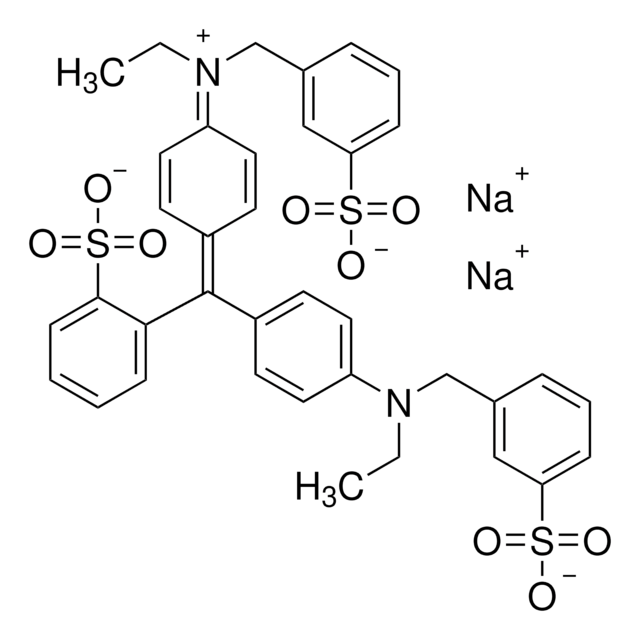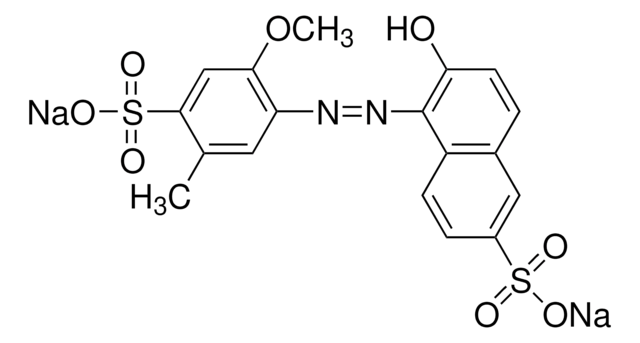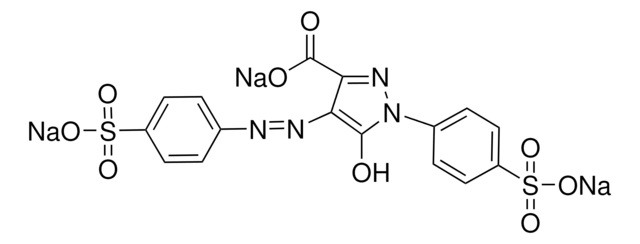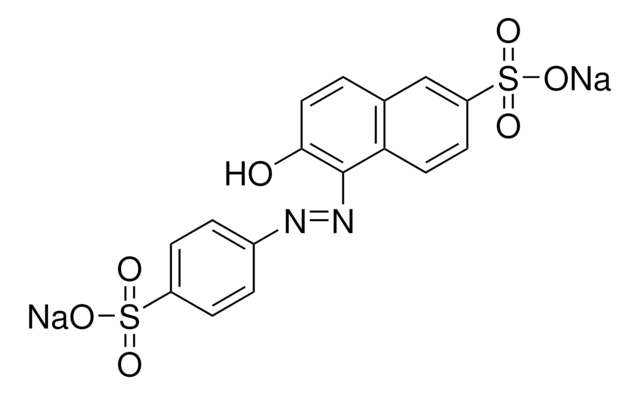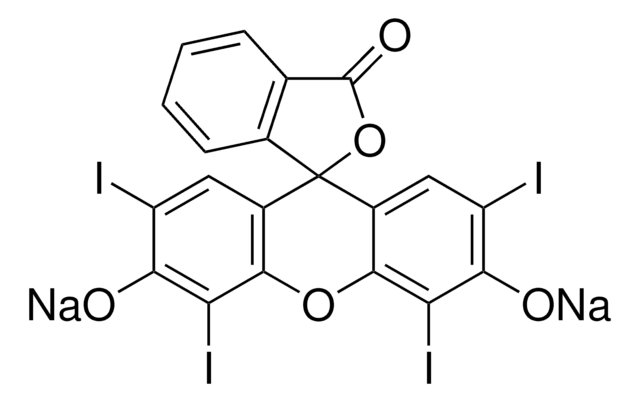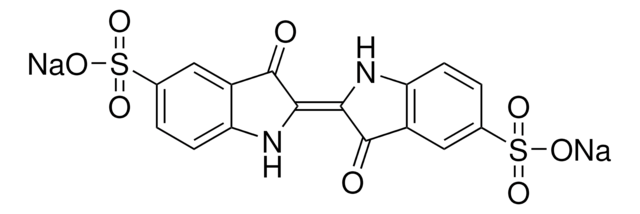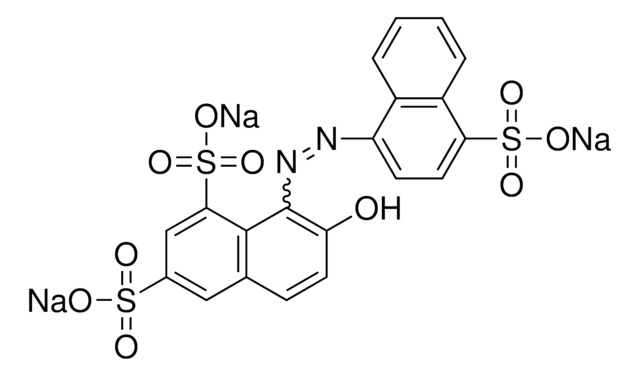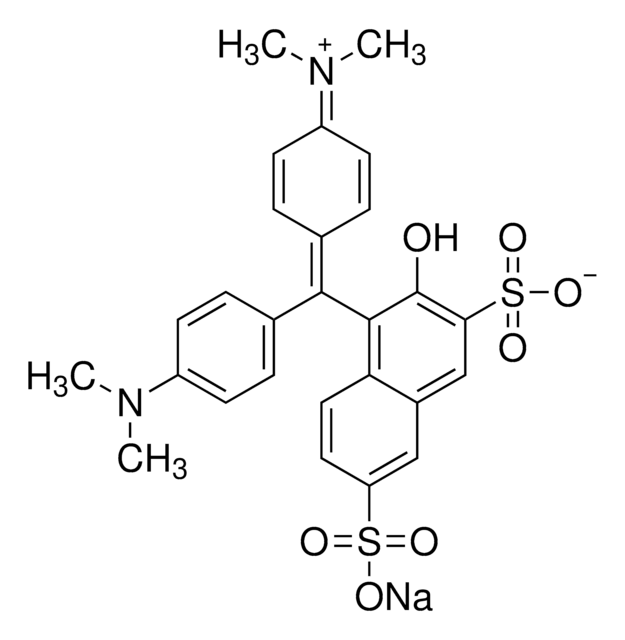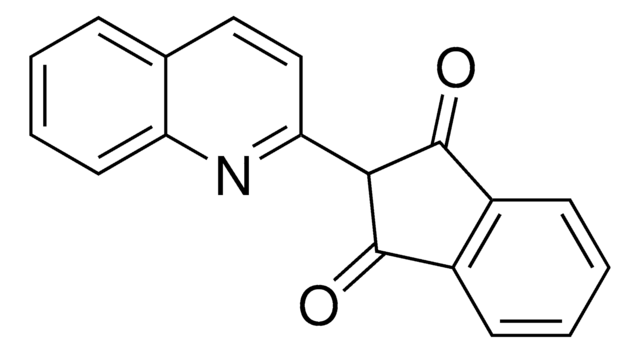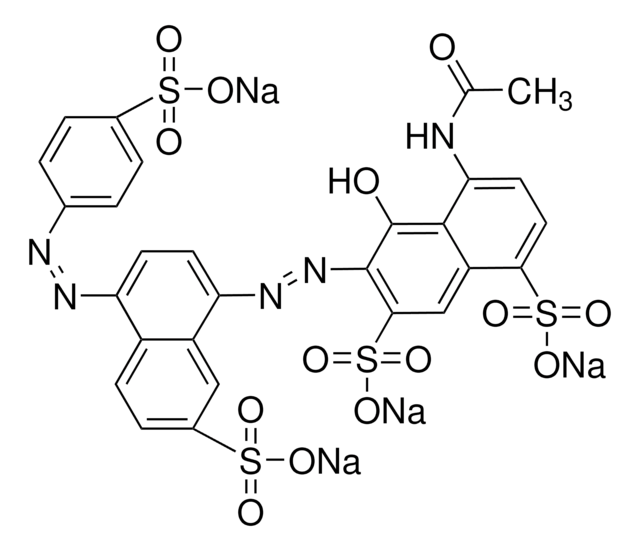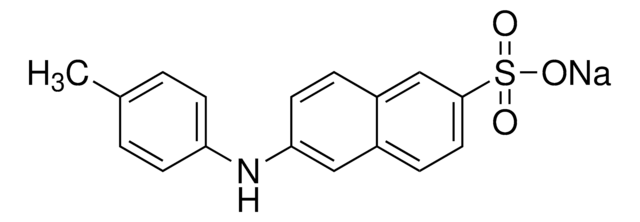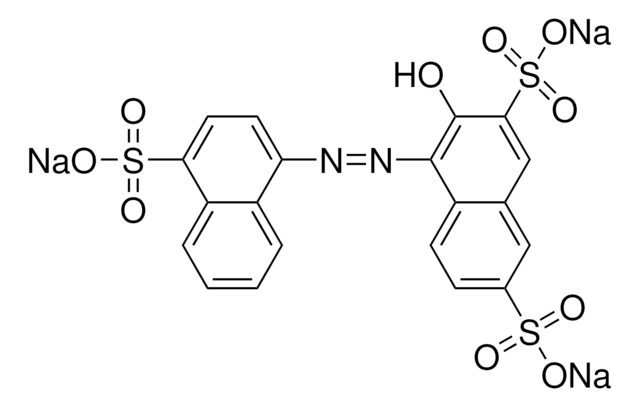38213
Allura Red AC
analytical standard
Synonym(s):
Disodium 6-hydroxy-5-[(2-methoxy-5-methyl-4-sulfophenyl)azo]-2-naphthalenesulfonate
About This Item
Recommended Products
grade
analytical standard
Quality Level
assay
≥98.0% (HPLC)
shelf life
limited shelf life, expiry date on the label
technique(s)
HPLC: suitable
gas chromatography (GC): suitable
mp
>300 °C (lit.)
application(s)
cleaning products
cosmetics
food and beverages
personal care
format
neat
SMILES string
[Na+].[Na+].COc1cc(c(C)cc1\N=N\c2c(O)ccc3cc(ccc23)S([O-])(=O)=O)S([O-])(=O)=O
InChI
1S/C18H16N2O8S2.2Na/c1-10-7-14(16(28-2)9-17(10)30(25,26)27)19-20-18-13-5-4-12(29(22,23)24)8-11(13)3-6-15(18)21;;/h3-9,21H,1-2H3,(H,22,23,24)(H,25,26,27);;/q;2*+1/p-2/b20-19+;;
InChI key
CEZCCHQBSQPRMU-LLIZZRELSA-L
Looking for similar products? Visit Product Comparison Guide
General description
Application
- Hydrophobic deep eutectic solvents (HDES) based liquid-phase microextraction (LPME) of Allura Red AC and tartrazine in food samples for their quantification by UV-Vis spectrophotometry
- Nanomolar-level determination of Allura red in soft drink powder samples using a voltammetric electrochemical sensor based on a glassy carbon electrode (GCE) modified with cross-linked chitosan film incorporated with carbon black particles and ionic liquid,1 -butyl-3-methylimidazolium tetrafluoroborate
- Simultaneous analysis of Sunset Yellow FCF, Allura Red AC, Quinoline Yellow WS, and Tartrazine in gummy bears, chewing gum, and sweet candy samples by reversed phase-high-performance liquid chromatography (RP-HPLC) coupled with UV detection
- Construction of an electrochemical sensor based on cobalt complex decorated carbon paste electrode (CoC/CPE) for the cyclic voltametric determination of tartrazine, sunset yellow, and Allura red in gelatin and pharmaceutical dosages of acetaminophen
- Multi-residue analysis of 20 synthetic dyes in 18 chili powders and six syrup-preserved fruit samples by liquid chromatography-tandem mass spectrometry (LC-MS/MS)
Packaging
Other Notes
Recommended products
Legal Information
Storage Class
11 - Combustible Solids
wgk_germany
WGK 2
flash_point_f
Not applicable
flash_point_c
Not applicable
Choose from one of the most recent versions:
Certificates of Analysis (COA)
Don't see the Right Version?
If you require a particular version, you can look up a specific certificate by the Lot or Batch number.
Already Own This Product?
Find documentation for the products that you have recently purchased in the Document Library.
Customers Also Viewed
Protocols
Separation of Tartrazine; Amaranth; Indigo carmine; New Coccine; Sunset Yellow FCF; Allura Red AC; Fast Green FCF; Erioglaucine disodium salt; Erythrosin B sodium salt; Phloxine B; Rose bengal
Our team of scientists has experience in all areas of research including Life Science, Material Science, Chemical Synthesis, Chromatography, Analytical and many others.
Contact Technical Service